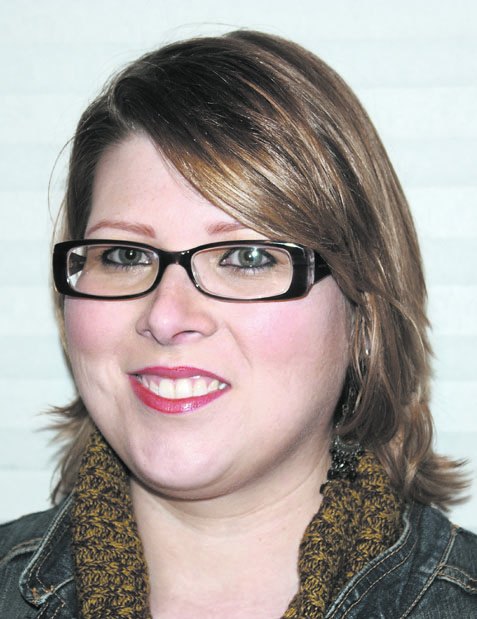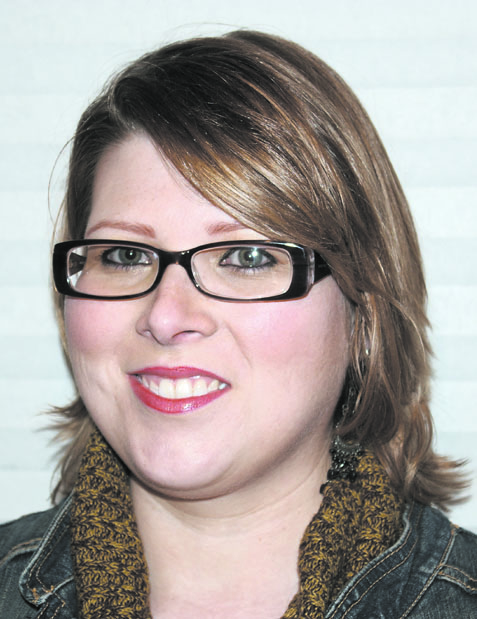 It’s a rather obvious statement that jail is a place you want to avoid.
So, of course, last week I found myself volunteering to tour the Platte County Detention Center along with the citizen committee appointed by the Platte County Commission to determine if expansion of the facility is needed — and how to pay for it.
I’m generally a fairly boring, definitely law-abiding kind of person. During my late high school and college years I had a lead foot and a string of speeding tickets, but the letter I got from the state warning me I could lose my license was deterrent enough for that.
Visiting behind bars was definitely the sort of wake-up call that makes you want to be even more than a law-abiding citizen. How do I get the real-life Monopoly get-out-of-jail-free card? And really, I’m being a little overly dramatic because the jail was hardly scary or ill-kept – but it still is a jail.
I think I was expecting it to be dark and smelly, but it was brightly lit and very clean. We toured the kitchen and the infirmary, the arraignment areas and the waiting rooms, booking and what Captain Joe King lovingly called “the rubber room.” Yes, it really is rubber. We saw trustees — prisoners deemed trustworthy enough to do chores — working on laundry and cleaning up the floor.
Then it was time to tour the detention areas. Embarrassingly enough, the buzzer warning of the eminent opening of the giant barred doors made me jump. There may have been a slight yelp. Can you blame me? I’ve seen “Silence of the Lambs.”
Climbing into the watchtower and looking down at all the prisoners — about 140 that day — going about their daily business of sitting around was fascinating. More fascinating was the breakdown of what we were seeing from Sheriff Mark Owen. Prisoners are sorted by designation — municipal prisoners go in one area, women in another, general population prisoners go in one place. Those in protective custody but not charged with crimes are kept separated, as are 17-year-olds, who according to state law are adults but not by federal law and so must be kept out of sight and sound of adult prisoners.
The maximum security area looks just like the others, except that instead of being free to wander the day room and play checkers or watch television, prisoners are kept in their cells for around 20 hours a day. This, Owen said, is home to the most dangerous offenders in the facility, those like Brandon Church, who was recently found guilty of the murder of his girlfriend’s father and who assaulted several deputies in his more than a year in detention awaiting trial. As we watched, a lone, unidentified inmate in a bright red jumpsuit slowly mopped the floor of the dayroom. Very slowly.
Occasionally, prisoners would look up to the watchtower, curious about the activity. Throughout our tour we saw prisoners, often standing at barred doors, watching us. Staring.
King told committee members that 90 percent of the people in the jail are “just ordinary people who’ve made mistakes.” The statement was greeted with snickers from some of the committee members.
And as for the much-talked-about scuffle between committee members detailed in last week’s issue, it was a more uncomfortable experience than the entire jail tour. I stood there, the most awkward fly on the wall, watching the entire exchange. Personality conflicts are bound to happen when groups of people come together with a purpose, but especially when those people don’t even know their purpose.
It wasn’t until this week’s meeting — three weeks into the committee process — that the members received the County Commission order that formed their committee. They also received a visit from First District Commissioner Beverlee Roper, who may or may not have muddied the waters further by pointing out the potential for a Jefferson City-mandated cut in sales tax revenue to the tune of about $2.8 million. Missouri Rep. Ken Wilson, who was also in attendance at the meeting, dismissed the numbers issued by Gov. Jay Nixon’s office, saying simply, “It’s politics.”
Of more interest to the committee members was a presentation by Kyle Elliott, a planner with the City of Kansas City. Elliott went over the numbers regarding possible population growth in the First Creek and Second Creek areas of the Northland. He started with some general statistics, noting that one-third of the population of the City of Kansas City now lives in the Northland, with that number expected to rise.
The committee received some clarification on population and growth estimates, too. Development is getting under way in the “Twin Creeks” area, west of Highway 169 and south of Interstate 435. Elliott said the City of Kansas City calculates its numbers in terms of capacity, and that the area has the capacity of becoming home to up to 130,000 people over 20-30 years. The City’s more conservative estimate is more like 85-90,000 residents, spread over both Clay and Platte counties. He suggested the committee get in touch with the Mid-America Regional Council and its technical forecasting department for more in-depth numbers.
Jeanette Browning Faubion is a Citizen staff writer. She may be reached by e-mail at
newsdesk1@plattecountycitizen. com or by calling
858-5154.
It’s a rather obvious statement that jail is a place you want to avoid.
So, of course, last week I found myself volunteering to tour the Platte County Detention Center along with the citizen committee appointed by the Platte County Commission to determine if expansion of the facility is needed — and how to pay for it.
I’m generally a fairly boring, definitely law-abiding kind of person. During my late high school and college years I had a lead foot and a string of speeding tickets, but the letter I got from the state warning me I could lose my license was deterrent enough for that.
Visiting behind bars was definitely the sort of wake-up call that makes you want to be even more than a law-abiding citizen. How do I get the real-life Monopoly get-out-of-jail-free card? And really, I’m being a little overly dramatic because the jail was hardly scary or ill-kept – but it still is a jail.
I think I was expecting it to be dark and smelly, but it was brightly lit and very clean. We toured the kitchen and the infirmary, the arraignment areas and the waiting rooms, booking and what Captain Joe King lovingly called “the rubber room.” Yes, it really is rubber. We saw trustees — prisoners deemed trustworthy enough to do chores — working on laundry and cleaning up the floor.
Then it was time to tour the detention areas. Embarrassingly enough, the buzzer warning of the eminent opening of the giant barred doors made me jump. There may have been a slight yelp. Can you blame me? I’ve seen “Silence of the Lambs.”
Climbing into the watchtower and looking down at all the prisoners — about 140 that day — going about their daily business of sitting around was fascinating. More fascinating was the breakdown of what we were seeing from Sheriff Mark Owen. Prisoners are sorted by designation — municipal prisoners go in one area, women in another, general population prisoners go in one place. Those in protective custody but not charged with crimes are kept separated, as are 17-year-olds, who according to state law are adults but not by federal law and so must be kept out of sight and sound of adult prisoners.
The maximum security area looks just like the others, except that instead of being free to wander the day room and play checkers or watch television, prisoners are kept in their cells for around 20 hours a day. This, Owen said, is home to the most dangerous offenders in the facility, those like Brandon Church, who was recently found guilty of the murder of his girlfriend’s father and who assaulted several deputies in his more than a year in detention awaiting trial. As we watched, a lone, unidentified inmate in a bright red jumpsuit slowly mopped the floor of the dayroom. Very slowly.
Occasionally, prisoners would look up to the watchtower, curious about the activity. Throughout our tour we saw prisoners, often standing at barred doors, watching us. Staring.
King told committee members that 90 percent of the people in the jail are “just ordinary people who’ve made mistakes.” The statement was greeted with snickers from some of the committee members.
And as for the much-talked-about scuffle between committee members detailed in last week’s issue, it was a more uncomfortable experience than the entire jail tour. I stood there, the most awkward fly on the wall, watching the entire exchange. Personality conflicts are bound to happen when groups of people come together with a purpose, but especially when those people don’t even know their purpose.
It wasn’t until this week’s meeting — three weeks into the committee process — that the members received the County Commission order that formed their committee. They also received a visit from First District Commissioner Beverlee Roper, who may or may not have muddied the waters further by pointing out the potential for a Jefferson City-mandated cut in sales tax revenue to the tune of about $2.8 million. Missouri Rep. Ken Wilson, who was also in attendance at the meeting, dismissed the numbers issued by Gov. Jay Nixon’s office, saying simply, “It’s politics.”
Of more interest to the committee members was a presentation by Kyle Elliott, a planner with the City of Kansas City. Elliott went over the numbers regarding possible population growth in the First Creek and Second Creek areas of the Northland. He started with some general statistics, noting that one-third of the population of the City of Kansas City now lives in the Northland, with that number expected to rise.
The committee received some clarification on population and growth estimates, too. Development is getting under way in the “Twin Creeks” area, west of Highway 169 and south of Interstate 435. Elliott said the City of Kansas City calculates its numbers in terms of capacity, and that the area has the capacity of becoming home to up to 130,000 people over 20-30 years. The City’s more conservative estimate is more like 85-90,000 residents, spread over both Clay and Platte counties. He suggested the committee get in touch with the Mid-America Regional Council and its technical forecasting department for more in-depth numbers.
Jeanette Browning Faubion is a Citizen staff writer. She may be reached by e-mail at
newsdesk1@plattecountycitizen. com or by calling
858-5154.
303 Marshall Road, Suite 1A
Platte City, MO, 64079
816-858-5154
Your Custom Text Here

The Platte County Citizen
Complete Platte County news and sports coverage.

